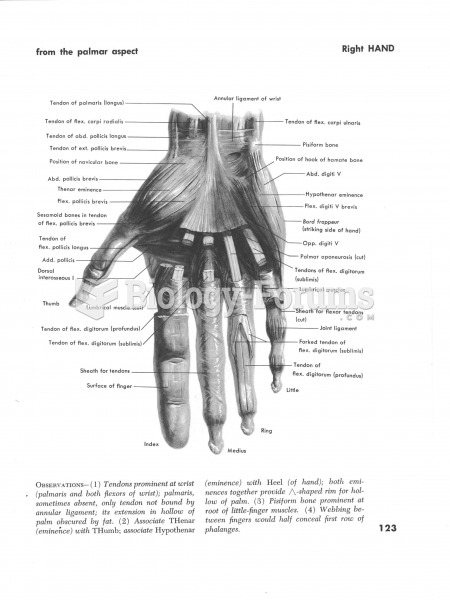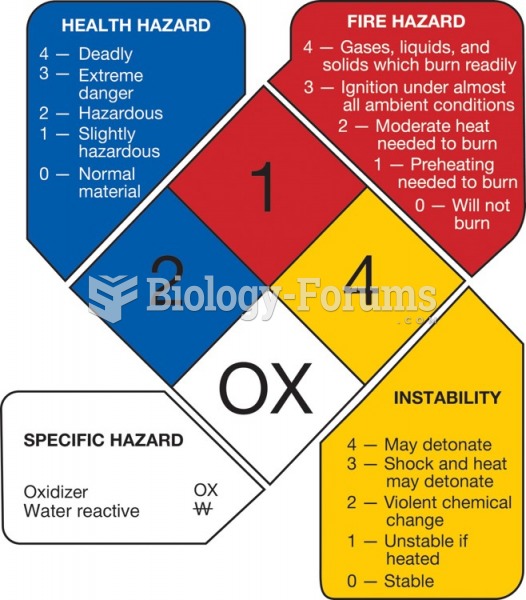|
|
|
Immunoglobulin injections may give short-term protection against, or reduce severity of certain diseases. They help people who have an inherited problem making their own antibodies, or those who are having certain types of cancer treatments.
Barbituric acid, the base material of barbiturates, was first synthesized in 1863 by Adolph von Bayer. His company later went on to synthesize aspirin for the first time, and Bayer aspirin is still a popular brand today.
More than 4.4billion prescriptions were dispensed within the United States in 2016.
Drugs are in development that may cure asthma and hay fever once and for all. They target leukotrienes, which are known to cause tightening of the air passages in the lungs and increase mucus productions in nasal passages.
A good example of polar molecules can be understood when trying to make a cake. If water and oil are required, they will not mix together. If you put them into a measuring cup, the oil will rise to the top while the water remains on the bottom.
 Turn head for access to suboccipital muscles and locate TrPs. Use fingers or thumb to apply pressure ...
Turn head for access to suboccipital muscles and locate TrPs. Use fingers or thumb to apply pressure ...
 (A) Alternating thumb petrissage to paraspinal muscles from sacrum to shoulder. Search for areas of ...
(A) Alternating thumb petrissage to paraspinal muscles from sacrum to shoulder. Search for areas of ...





